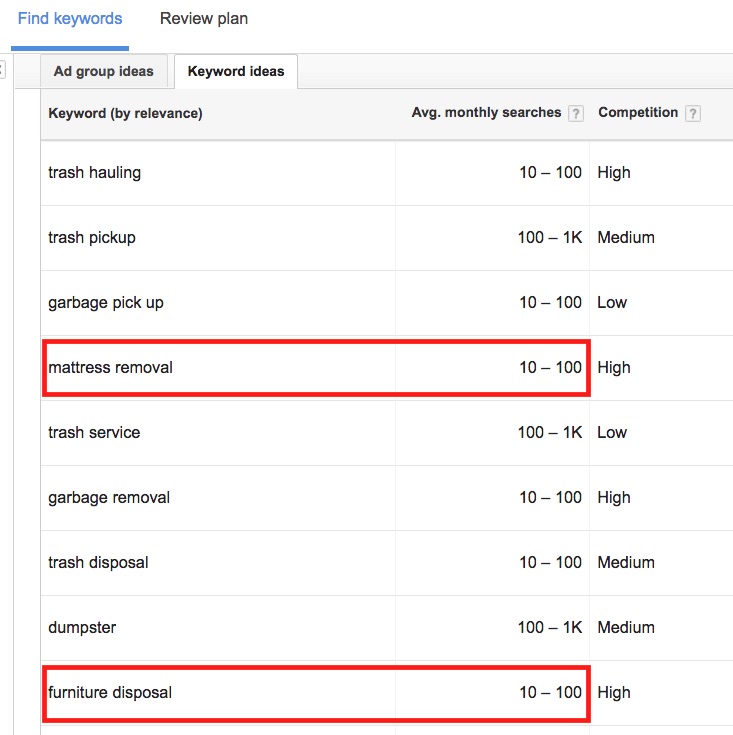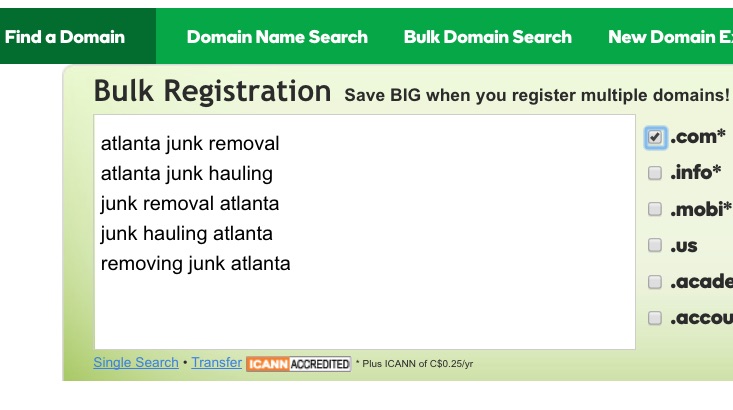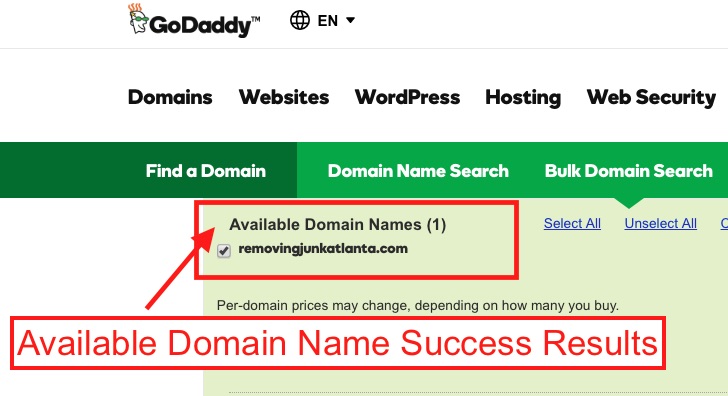Setting up a blog for your website is an important part of your SEO strategy. It works well in all industries and will truly benefit the local business owner. Getting started is simple.
Blogging for your business means first you have to have a blog. This is a type of website that allows you to simply add information to it whenever you want to. Here is more information on setting up your blog and more detail on the technical aspects of a business blog.
Although the strategy is a simple one, there are a lot of details that need attention. Some are big, some are small, and all of these details are important. Fortunately most of the setup is done by professional developers and your part is quite easy. And once you get going the blogging process just gets easier.
There are several ways to make your business blog bring you traffic, leads, sales, prospects, or just visibility. It is by using a blogging platform that will really put your website to work for you and your business. Most business owners either overlook this or don’t want to put the effort into it.
Why a Local Business Should Have a Blog
Where to Start
Whether you already have a website or not, setting up your blog will still require the same number of steps. You may want to transfer your current website content to the new platform or add the blog to your current site.
The first and most critical step is knowing exactly what the general ‘topic’ of your blog is going to be. This will be tightly related to your business and the ideal customer you seek.
Organic Traffic from a Blog
Blogging requires you add articles of interest in your niche on a regular basis. This page is an example of a blog post written specific to the niche of “local business” and “Local business blogging”. You are on this page reading about a topic you searched for on the internet.
Examples of how blogging works for local businesses:
A blog entry like this will be “found” when someone local searched for “how to unclog toilet”. Now they learn about your company and enjoy a story. Perhaps unclogging a toilet doesn’t always require a plumber but they will certainly remember you next time they do need one.
Every time you write a specific topic that will be helpful to the local residents, the more likely you will be found in a local search on the search engines. This is how your online digital property works for you 24/7. Even if you have to pay someone to write the stories and articles for you – it’s worth it.
Once you have written an article for your blog it becomes “indexed” and available on the internet for as long as you keep it on your website. These articles (blog entries) also work well for when you advertise and send PAID traffic to your online store.
Deciding What to Blog About
Setting up blog is “front end loaded”. By this I mean, all (or most) of the work is done at the start on the front end. First you have to have the niche (your business category), do the research (on competitors, find out what people are looking for), and design the layout etc. Once the MAIN structure is set up then it continues to work FOR you.
The tendency to answer “anyone” is common but not at all accurate. When setting up your business blog you need to seriously hone in on your target customer.
Targeting Your Ideal Customer
Here is how you know that customer isn’t “anyone”. For example; if you are a residential electrician your customer is predominantly a homeowner. I will wager you aren’t particularly interested in spending money on advertising to college students who live in their dorm.
Maybe you would prefer new construction as your main revenue stream but for exercise we will focus on “Homeowners”
To target in on your ideal prospect the next consideration is to discover what makes you the most money in your business. Is it kitchen renovations? Panel upgrades? or new in-law suites? If you don’t already know then dig through your files over the past couple of years.
For this exercise let’s assume you will focus on panel upgrades. This doesn’t mean you can’t also advertise for kitchen renovations. The procedure will be the same. For best results you need to focus on one sub-niche at a time.
Targeting your customer even further you decide on the focus of the panel upgrades. It can be from a fuse panel to circuit breakers, or maybe upgrading from 100 amp to 200 amp. Again for the purpose of this post we will assume you are focusing on fuse to breaker. Now that you have a super specific niche for your business to focus on, you can now choose some topics to write about for the blog.
Example Blog topics for the Local Residential Electrician
Here are some ideas on how you can choose some topics to write about. With the permission of your customers you can use their story and their photos. If you don’t have their permission you keep it general but still informative. AND – these posts can be set up to automatically post to your facebook, Twitter, and Google+ pages. This is where your friends and followers will see what you are up to.
Sample blog post ideas:
“Why John Street in MayVille still has 60 amp Fuse Panels”
“How to Change Your Fuse Panel to Breakers for as Little as $800”
“Knob and Tube Wiring is Safe Until You Need to Upgrade Your Fuse Panel”
Next you can segue into your kitchen renovations or in-law suites. For example; you can talk about these as reasons for upgrading a panel. Then jump into more blog posts all relevant to the new topic.
As you can see, your target customer is NOT everybody.
Help in Choosing Your Topic to Blog About
You may already have a website and have chosen a URL that matches your business name. Often times people make the mistake of being “pithy” when choosing a business name and it will work against you online. If you call yourself LosItAll because it was a “cute” name to call your junk hauling company, you are having to spend additional fees on BRANDING. Branding is great but costs. Focus on your service and the need you are fulfilling for quicker results at less expense.
If you have already invested the time and money into a main website that is called www.loseitall.com – you can keep it or move it. A website can be moved to a new url and not lose too much traffic provided it is done correctly. If you prefer to keep the main site you can simply add your blog as a subdomain. You can name it something relevant like “Junk Removal” and it will look like this: junkremoval.lositall.com
or put it in a file to look like this: loseitall.com/junkremoval/
There are free online tools that can help you decide what best to call your business website and/or your business blog. Tools like Google’s keyword tool, Übersuggest, Google Trends, or paid tools like Wordtracker to help you out with this.

You can see the results are limited to different terms without actual data. This is still a great place to start for ideas.
Next you can try using the Google keyword planner. This can be targeted to your local area of business to get an insight to what words are actually used by your customer when they are searching online for your type of service. Google Keyword planner will spin out terms it considers to be “related” to the words you plugged in. Plus it shows you how many searches a month the different keywords get.

As you can see in this next screenshot – there are some interesting results. By super targeting keywords like “mattress removal” or “furniture disposal” in your blog, you will increase your chances by being the company they call because you are now positioned as THE solution to their specific problem.

Blog topic ideas to write about could be “Laws in Atlanta Regarding Furniture Removal” or “How to Get Rid of Your Old Mattress in Atlanta”.
Try it out yourself and check out the “Ad Group” suggestions too. This will help to set up the categories in your blog as well as your AdWords and Bing accounts.
Choosing a Domain Name for Your Website
I touched on this in the section above. If you do not have a website already it is a good idea to use keyword search terms in conjunction with your business name. If you haven’t started your business yet and just in the process, using keywords in your name is a good idea. Using the Junk Removal business example; try simply adding the community area you serve to the actual job you do. Junk Removal Atlanta
In many cases your local business registry office will need more specifics to give you the name like “John’s Junk Removal Atlanta” or “John Jones Junk Removal Atlanta”. You can still choose a URL that is keyword specific but still broad in your niche. The more general the targeted term the better when choosing your domain name. You can narrow your search terms by using the blog.
If you haul junk with your truck on weekends you probably don’t want people who are looking to rent a dumpster. You also don’t want people who are looking for the city’s trash pickup times. Don’t choose words that will confuse your customer. If you don’t haul junk cars you need to avoid those terms as well.
What is a Domain Name?
Your domain is the URL or your www.YourDomainName.com. Deciding on what you want your url to be takes a little planning too.
After having done your research above and now decided on the term you would like to call your blog, you should try and match your blog name to your url if at all possible. Yes, the “Exact match” domain isn’t AS influential as it once was, but you are one step ahead for SEO purposes if your url, blog name, and purpose of your blog, all match up as closely as possible.
In the popular niches and heavily competitive businesses, trying to find unused domain names that closely match your service or product, may take a few tries.

Using the list of keywords you discovered in your keyword planner, with the greater search numbers, that are still closely related to your business, you can do a domain search at any of the thousands of domain sellers out there. For simplicity and speed you can do a bulk search using the GoDaddy Bulk search tool because it’s quicker when you have more than one search to do or are using highly competitive search terms.

You will see that I entered several of the terms, checked the ☑.com and clicked on “go”. You can see the more popular terms have been snatched up already. This doesn’t mean you have all that competition though. Some domains that are “taken” may be parked and for sale, while others redirect to another url. IMPORTANT: Take the time to investigate and research your competitors.
Personalise Your Business URL
If you find the truncated keyword search terms are used up in the domains then try adding your name to it. For example; John’s Landscaping Calgary.
Now that you know what you want for your url you need to register your domain. If you don’t have a website yet you will also need a hosting account. DO
You may have noticed there are several free blogging platforms. Free is OK if you don’t care about having control over your website.
In short – if you want a website because this is how you make a living, or as a serious endeavour of any sort, I strongly suggest you go with paid hosting to avoid the risks associated with the free website service and choose the WordPress blogging platform. There are other blogging platforms but WordPress has the majority of help, plugins, and developers. This makes it a great tool with plenty of resources.
How to Choose a Hosting Company for your Blog
There are several different hosting companies to choose from. They all have their ups and downs.
The bottom line is; if you mess up with your initial choice in hosting companies, you can always move your site to a different company. See the post on The Simplest Way to Move your Website to a New Hosting Company. Also covered are several indicators that will signal you when it might be the time to change hosting companies.
For simplicity, if you are a non-techie person but want to be “hands-on”, choosing a hosting provider with a cPanel and a good reputation will be best.
Making a REAL Blog
The word Blog is derived from the earlier Web Log, which was used to keep a diary or journal on the world wide web (www). One of the more well known ones was a blog titled the “Julie/Julia project” where Julia Powell did a public journal of her self imposed challenge to cook every recipe from Julia Child’s cookbook. Eventually her blog turned into a book and then a movie Julie & Julia: 365 Days, 524 Recipes, 1 Tiny Apartment Kitchen.
A Blog is build on a CMS (content management system) – essentially it is designed so you can write as easily as you can with a simple word processor. When you are ready to publish the CMS will publish to the internet and set up the chronological system for you.
Quite simply you write a “post” and when you are finished you click “publish”. That’s all there is to getting your message out for all the internet world to see This enables you to write anytime day or night. Which leads into the next topic of
How to Write a Blog
There are two very important aspects of writing you need to be VERY aware of:
1. Don’t copy someone else’s stuff. Think of the Search Engines as Santa Clause. They know if you’ve been bad or good, and stealing is bad! Even if you purchase the content using PLR (public label rights) you really need to give it your own perspective.
I’ve given you some good ideas above about how to come up with article ideas but it is also detailed in this post “article writing for SEO.”
2. You don’t need to be a creative writer or have a masters in English. Just be true to your passion and talk to your desired customer as though you are sitting together at the beach or a coffee shop.
Coming up with topics for ideas can come from PLR or other blogs, there is nothing wrong with that, just be sure to put your own spin on things so it is original. Another way to come up with ideas is using one of the keyword tools discussed above. It will find related ideas for you that you can use as headlines or titles to get you started and you can expand from there.
Outsourcing Your Content
There are many outsourcing or freelance companies with several people lined up to write for you. You can also hire individuals or trade links for articles. Not every post has to be written by you. Just be careful and do your homework to make sure the content they write for you is original, relevant, and most important; INTERESTING to your customer.
There you have it – blog is up, you are posting to it on a regular basis, and the traffic and leads will begin to flow.
